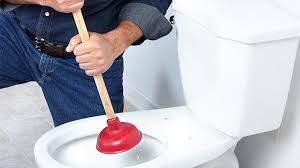Dealing with a toilet that isn’t flushing properly due to low water levels can be frustrating. This common issue can stem from various causes, ranging from simple fixes to more complex plumbing problems. In this article, we’ll explore the reasons behind a toilet not flushing water low and provide practical solutions to get your toilet back to normal.Common Causes of Low Water Level in Toilet Bowl
- Clogged Rim Jets: The small holes under the toilet rim can become clogged with mineral deposits or debris, reducing water flow into the bowl.
- Faulty Fill Valve: A malfunctioning fill valve may not allow enough water to enter the tank after each flush.
- Improper Tank Water Level: If the water level in the tank is set too low, it won’t provide enough water for a proper flush.
- Blocked Vent Pipe: Plumbing vents on your roof can become blocked, creating air pressure issues that affect flushing.
- Partial Clog: A developing clog in the drain pipe can restrict water flow without completely blocking the toilet.
How to Fix a Toilet with Low Water Level
- Check and Adjust the Tank Water Level
Remove the tank lid and observe the water level. It should be about 1 inch below the overflow tube. If it’s lower, adjust the float mechanism to allow more water into the tank. - Clean the Rim Jets
Use a small mirror to inspect the rim jets under the toilet bowl’s edge. If they’re clogged, clean them with a stiff brush or a piece of wire. For mineral deposits, soak a rag in vinegar and place it over the jets for several hours before scrubbing. - Inspect and Replace the Fill Valve if Needed
An old or malfunctioning fill valve may need replacement. This is a relatively simple DIY project that can significantly improve flushing performance. - Check for Vent Pipe Issues
If multiple fixtures are draining slowly, you might have a blocked vent pipe. This typically requires professional attention to clear safely. - Address Partial Clogs
Use a plunger or toilet auger to clear any developing clogs in the drain pipe. Avoid chemical drain cleaners as they can damage porcelain.

Preventive Measures to Avoid Future Issues
- Regularly clean your toilet bowl to prevent mineral buildup
- Consider installing a water softener if you have hard water
- Avoid flushing anything other than toilet paper and human waste
- Inspect and maintain your plumbing system annually
- Replace older toilet components before they fail
When to Call a Professional PlumberWhile many low water level issues can be resolved with DIY methods, some situations require professional help. Contact a plumber if:
- The problem persists after trying basic troubleshooting
- You suspect sewer line issues
- There are signs of water damage around the toilet
- The toilet is very old and may need replacement
- You’re uncomfortable performing repairs yourself
Understanding Toilet Water MechanicsToilets rely on gravity and siphoning action to flush waste effectively. When the water level is too low, this siphoning action can’t occur properly. The ideal water level creates enough force to pull waste through the trapway and into the drain pipes. Modern toilets are designed to use just enough water (typically 1.6 gallons per flush) to accomplish this efficiently.Environmental ConsiderationsWhile addressing low water levels is important for proper function, it’s worth noting that water conservation remains crucial. If you’re experiencing low water issues with an older, high-volume toilet (3.5-7 gallons per flush), consider replacing it with a modern, water-efficient model rather than simply increasing the water level. This approach solves your flushing problems while conserving water.By understanding the causes of low water levels in your toilet and following these troubleshooting steps, you can restore proper flushing function and prevent future issues. Regular maintenance and prompt attention to minor problems will keep your toilet working efficiently for years to come.
